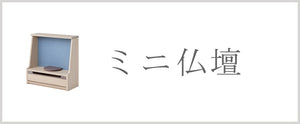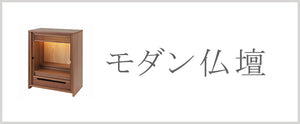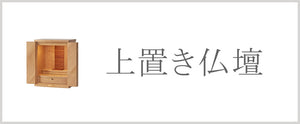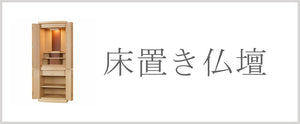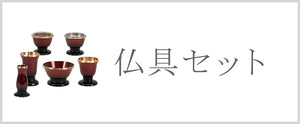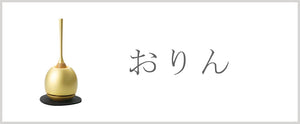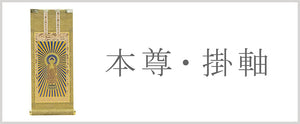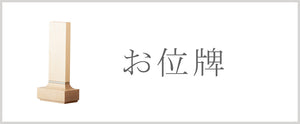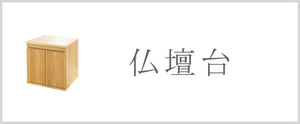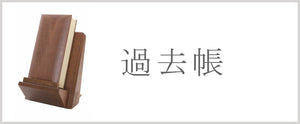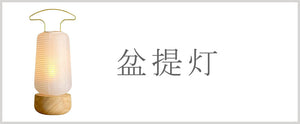Last updated:
Release date:
Many people have Buddhist altars left behind in their vacant family homes. They have left them there, and it's troubling them, leaving them in the back of their minds.
In this article, we will explain what to do with your family's Buddhist altar, how to dispose of it, the costs involved, and how to burn it.
What should I do with the Buddhist altar that was left abandoned at my parents' house?
There are four main ways to deal with a Buddhist altar that has been left at your parents' home.
We will introduce them below, so please understand the advantages and disadvantages (issues and points to note) of each option before choosing the appropriate method.
Take over as is
First, you have the option of moving the Buddhist altar to where you currently live and continuing to use it as is.
The advantage of this method is that you don't have to purchase new equipment, which helps keep costs down.
Also, if you have an attachment to the Buddhist altar itself, you can keep your memories there.
If you are inheriting a Buddhist altar, you will need to check the size and whether there is enough space in your living environment to fit the altar.
If you have a Buddhist altar room, it is also important to check whether the altar will fit inside the room even when the doors are open.
Make sure that the altar can be easily transported along all routes, including elevators, stairs, entrances, and door widths.
Also, if the Buddhist altar at your parents' home is traditional, it may not fit in with the atmosphere of the room, so you should think about which specific room you would like to place the altar in so that it will not look out of place.
It is also important to be aware that depending on the condition of the Buddhist altar, it may be damaged during transportation.
Once you have confirmed the size and selected the location for the altar and are ready to transport it, we recommend taking photos before removing the small Buddhist altar accessories that are inside.
This is to prevent the location of the Buddhist altar equipment from becoming unknown after it has been moved.
When moving a Buddhist altar, a memorial service (soul removal, closing the eyes, and soul removal) is required.
Please check with the temple you are affiliated with.
Repair and take over
Many people choose to restore it and take it over.
Buddhist altars made by traditional craftsmen can be completely restored, including the wood, lacquer, gold leaf, metal fittings, maki-e (lacquerware), and shoji screen gauze on the main body and doors.
If you are concerned about stains that have developed over time, one option is to start by cleaning and repairing the item.
The price of cleaning and repairing a Buddhist altar varies depending on the process and technique used, so you should have a representative from a Buddhist altar store visit your home in advance to inspect the item in person.
Depending on the Buddhist altar store, they may be able to work with the temple to handle things like memorial services for the principal image (eye-closing and eye-opening ceremonies).
The advantage of restoring and passing it on is that it allows us to preserve a valuable Buddhist altar that was made using materials and techniques that cannot be made today.
The downside is that repairs can sometimes cost more than buying a new one.
In addition, the restoration will take approximately six months, so if you have a memorial service coming up, you should check the delivery date.
Buy a new one
Another option is to replace the Buddhist altar at your parents' home.
The advantage of replacing your existing altar is that you can choose one that suits your current home.
When replacing your altar, it may be a good idea to choose one that is smaller than your original one.
The fact that the scale has been reduced does not mean that it is disrespectful to our ancestors.
Recently, there are also Buddhist altars with smart designs that fit in well with modern Western-style rooms.
However, one thing to keep in mind when replacing your equipment is that you will have to pay the cost of purchasing a new one.
Also, if you want to keep your existing principal image and memorial tablets, you will need to carefully check the internal dimensions of the altar, as your desired design and size may not fit.
Dispose of
Finally, you can simply dispose of the Buddhist altar at your parents' home without having to repair or replace it.
In that case, you will need to consider how to dispose of the old Buddhist altar, principal image, and memorial tablets.
Depending on the method, the cost will vary.
The advantage of choosing the disposal option is that you can easily dispose of your Buddhist altar if you are neglecting it but cannot repair or replace it. It frees you from the anxiety of "There's a reason for it, so what should I do..." and the mental burden of "passing it down from generation to generation."
However, when disposing of the property, you must be careful not to leave any lingering feelings of guilt or cause disputes between relatives.
There are various memorial services for graves, such as permanent memorial services, but there are no memorial services for Buddhist altars after they are given up, so if you have any concerns, it is best to consult the temple.
How to dispose of a Buddhist altar that has outlived its usefulness
When replacing or disposing of your Buddhist altar, you need to consider how to dispose of the altar that has outlived its usefulness.
Here we will explain how to dispose of a Buddhist altar in a step-by-step manner.
Consult a temple or Buddhist altar store
First, tell your family temple (the temple that takes care of you) that you would like to give up your Buddhist altar.
At that time, be sure to also discuss how to handle the principal image and memorial tablets.
If the temple does not accept altars, please consult with a Buddhist altar store.
If you use a Buddhist altar store, you may be able to request the entire process, including collection.
Eye-closing ceremony (removal of the soul)
When disposing of a Buddhist altar, it is essential to perform a "closing ceremony (closing the eyes, removing the soul, removing the spirit)."
A closing ceremony is a ceremony to remove the soul from the altar in order to avoid disposing of the altar with the soul still inside.
If you do not currently have a relationship with your family temple, you should consult with a Buddhist altar store about memorial services.
Disposal and burning
You can ask your family temple or Buddhist altar store to actually dispose of or burn the items, or you can also take them to your local government's unwanted item collection center.
In either case, it is important to perform a closing ceremony before disposing of the altar and to give it away without treating it carelessly until the very end.
If you are disposing of your family Buddhist altar, do so carefully and with gratitude.
Some people may feel guilty about leaving their family Buddhist altar in a neglected state.
But there are many others who feel the same way.
We live in an age where you can choose how to care for your neglected Buddhist altar in a way that suits your lifestyle.
Whatever you choose, as long as you perform the proper eye-closing ceremony and remember to be grateful to Buddha and your ancestors, you will be fine, so don't worry.
Nagomi Kobo TOP page is here >


